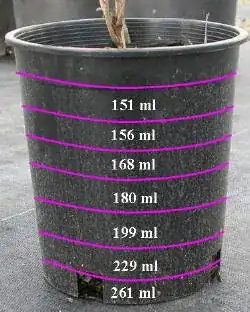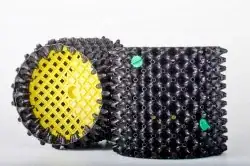We know that when you have soil in a container, the water gravitates to the bottom so that there's a gradient of water content in the soil from lowest at the top to highest at the bottom.

For any particular soil mix, the height of the perched water table is the same regardless of the shape of the container.
Having more holes in the floor of the container doesn't necessarily help with drainage as we can see from this extreme example from Air-pot

where the bottom is just full of holes. Water is kept inside the pot on account of capillary forces and a perched water table can exist as mentioned above.
So, feeling the soil at the top of the container tells you little about how much water your roots are sitting in at the bottom of the container. You have to be able to feel the soil at the bottom or use a moisture probe that reaches deep into the soil.
One way to drain moisture from a pot, as mentioned in another answer, is to insert wicks into the soil. Since the water is at the bottom, the wicks have to be inserted from underneath into the soil. Capillary action from the tighter weave of the wick can then draw water out of the container.
Since the perched water table is at the same height regardless of shape of the container, another way is to double pot the container. By sitting the pot into another with the same mix, we are effectively converting it into a tall container, and the perched water table moves into the second pot. This assumes that you have large enough holes at the bottom to make enough contact between the soil in both pots.
Since gravity determines where the water sits, it occurs to me that you could invert the container if it's of a suitable size. You could pack the top with more of the same potting mix and hold it down with a mesh so that it doesn't all fall out. The perched water table would then move to the "top" of the container, and this would pull in fresh air to the "bottom" aerating the roots. You still have the problem of removing the water which could be done by wicks but this would sound like the fastest way of moving the water away from the bottom roots and to provide air.
http://oregonstate.edu/dept/nursery-weeds/feature_articles/physical_properties/physical_properties.html

